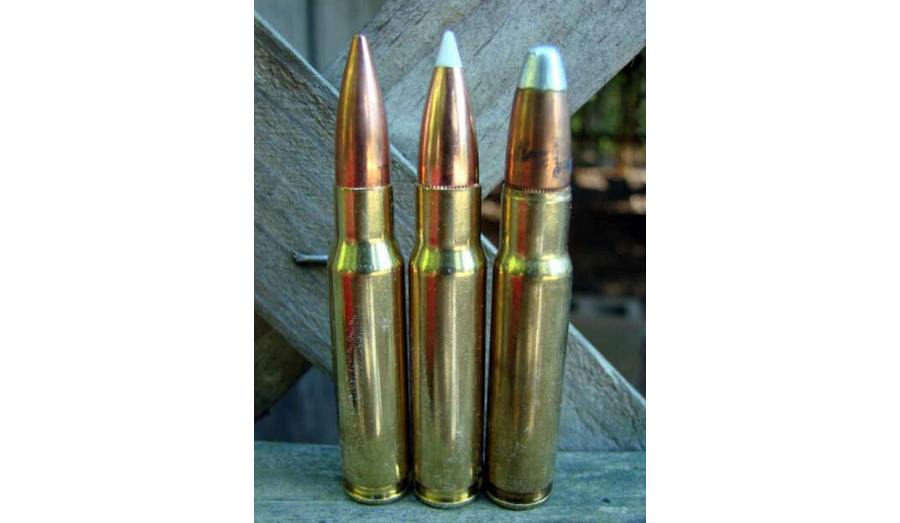While the 5.56×45 NATO cartridge certainly has killed its share of bad guys in combat, every now and then soldiers wish they had something with a little more oomph, like the 7.62×51 NATO. As the saying goes, 7.62×51 turns cover into concealment. Hide behind a tree with someone tossing 7.62 NATO your way, and pretty soon that tree is going to get shredded. But every now and then even the 7.62×51 doesn’t offer enough oomph, and shooters want to move to something bigger and better. That’s where the .358 Winchester comes in.
The .358 Winchester was introduced not too long after the introduction of the .308 Winchester, and is essentially just a .308 Winchester necked up to accept .358-caliber bullets. It became a popular cartridge for hunting in heavy brush and thick timber, as its heavier bullets were less likely to be deflected by leaves and twigs, and was chambered in both bolt-action hunting rifles and lever-action rifles such as the Savage Model 99. Popularity of the cartridge dwindled for some time, but it has become more popular in recent years for those looking for a little more power from their .308-platform battle rifles.
The most common bullets for the .358 Winchester weigh between 180 and 250 grains, which have the same sectional densities as .308-caliber bullets weighing between 133 and 185 grains. But the .358 Winchester can also be used to fire .357-caliber bullets such as those from the .357 Magnum, allowing it to fire pistol bullets as light as 110 grains. On the upper end, heavy bullets top out at 310 grains from commercial bullet companies, while bullet molds are available that can cast bullets weighing up to 320 grains.
The .358 Winchester is capable of pushing 200-grain bullets to 2,600 feet per second, and 250-grain bullets to 2,300 feet per second, producing about 3,000 foot-pounds of muzzle energy. Where the .358 shines is in its performance from shorter barrels. Because of its larger bore diameter and therefore larger expansion ratio, the .358 doesn’t suffer a significant loss in velocity from shorter barrels. Some shooters have even been able to get 2,450 feet per second from 225-grain bullets in a 14.5” barrel, for 3,000 foot-pounds of muzzle energy.
That kind of performance makes the .358 Winchester a natural choice for shooters looking for a little more power from an AR-10/AR-308-style battle rifle. Brass is easily formed from .308 Winchester, and .358 Winchester is supposed to be able to feed from .308 magazines without alteration.
As with many other derivatives of the .308 Winchester, such as the .338 Federal, the .260 Remington, or the 7mm-08 Remington, ammunition isn’t always available off the shelf, and when it is, it’s often expensive. During times of ammunition shortage like today, the cheapest ammunition you’ll find is at least $1.60 a round, making handloading one of the best options to shoot cheaply. If you’re able to overcome the issue of ammo supply and availability, the .358 Winchester could play a very important role in your survival armory.
This article was originally posted on Red Tea News.





